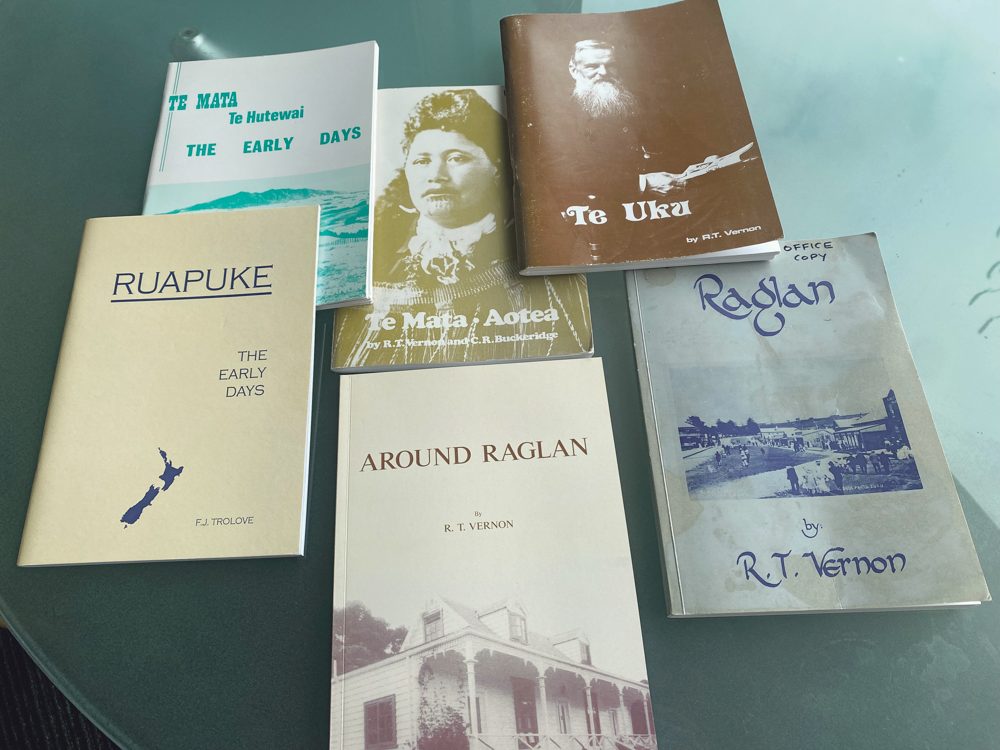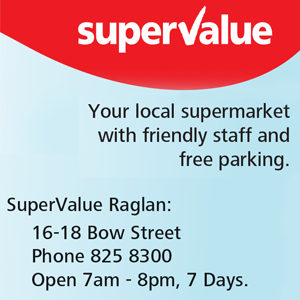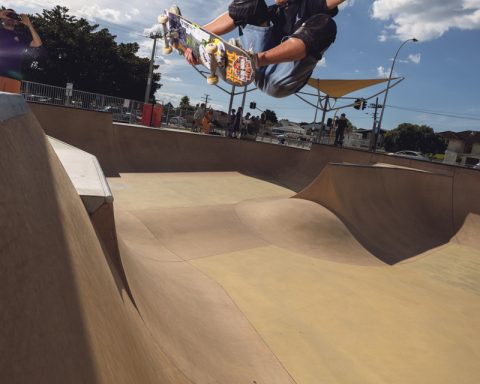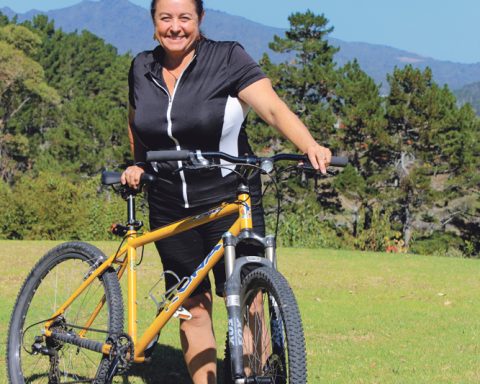News from the Raglan Museum is that one of our volunteers, Margaret Couch (nee Pegler) has completed an index for the book “Raglan” by Robert T. Vernon. This was a hefty body of work and she was ably assisted by other museum volunteers, who needed to cross check every name mentioned in the book with the pages they were mentioned on.
This will be a wonderful addition to the book, allowing family members and friends of our venerable settlers and locals to locate them and their stories at the turn of a page. Given the number of requests the staff and volunteers of the Museum and Ihub have, the index will be a valuable tool for people to go back and read the many interesting stories in this little book – some of which might surprise or even shock them! And they will be able to focus on those they have a personal interest in without having to trawl through too many pages.
“Raglan” is certainly not a boring history book. Instead, it is a series of wonderful and often amusing vignettes of people and community. Whilst it is essentially a story of early European settlers and the progress they made in forming a resilient and vibrant town, it also includes stories of their relationships with the existing population and how they worked together to achieve these goals.
Given that this was the 2nd last (published in 1984) in a series of books written or motivated by Bob Vernon over a period of 15 years, I got to wondering what sort of man he was. So I met with one of his sons, Trevor, and his partner, Janet, in one of their favourite cafes, to find out something about him and why he did so much to record the history of our little town.
Bob was a member of the Raglan Old Settlers Association and it seems that members got talking about the need for stories to be written down for posterity. Bob decided to take up the challenge once he was retired and started with the history of Te Mata. The Introduction in the “Raglan” book (by Coralie and Colin Ormiston) says that Bob got hold of his friend Jack Trolove and said he should write the book on Ruapuke whilst he himself would concentrate on Te Mata. Apparently “there were protests, but Bob found urgent business elsewhere, and Jack set to work with some trepidation”.
So already I had some inkling about Bob. He was hardworking and enthusiastic and not someone to give up easily. During his working life on the family farm at Te Mata, he ran a successful butchery. Trevor remembers him working late into the evenings, taking orders from all over the district. He then packaged them all up before he headed to bed, only to rise early and deliver each order by hand.
Not only was he successful with his butchery business but he was always one to see good opportunities, and increased the size of the farm by buying up different parcels of land around it.
Bob was a real family man and loved his 5 children and his ever-tolerant wife, Frances. But such was the busy-ness of his life that he didn’t always have a lot of time to spend with them. But he did enjoy a game of bridge when Frances was able to pull him away from his many activities!
The Ormistons also talk of Bob doing “social work” during the 15 years of his retirement. Trevor thought this must have referred to his dad’s intense interest in the lives of everyone he met, as well as his willingness to help anyone who needed it. He and his wife, Frances, were active members of their Anglican church in Te Mata as well as in Hamilton, their retirement town. This interest shines through in the many stories he tells in this book. Not only did he write them but he encouraged others to get their stories down and then spent much time re-writing, editing and compiling everything into a very readable document. He worked constantly to complete this very important project and Trevor told of how frustrated he was that the final book, “Around Raglan” could not be published before he passed away.
Trevor seems to have inherited some of his dad’s sociability and energy. Not only can he be seen downtown most days, chatting and enjoying coffee, but he is still an active member of the Raglan Ramblers. He too has a multitude of insights and anecdotes about family life and friends, so there’s a good chance some of those might appear in the Chronicle – a continuation of Bob’s storytelling skills.
Meanwhile, watch out for some of the stories from “Raglan” in forthcoming issues of the Chronicle. You will be surprised at how much you didn’t know about the life and times of your predecessors!
This book and the other 5 (covering Ruapuke, Te Mata, Te Uku and Aotea) are available for sale at the Raglan Ihub in Wainui Road. A new print run will incorporate the index but in the meantime this can be purchased from the Museum for a few dollars. So support your local Museum and your cultural heritage by making sure you have a copy in your home and your BnB!











